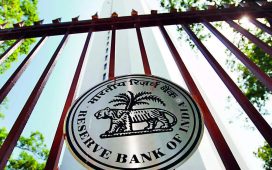
Speaking to reporters, Minister Khattar, said, “There are guidelines that can be given to the state governments. Ultimately, the work of implementation is the responsibility of the state governments, so we will definitely appeal to everyone as the power sector has become so important nowadays… if the sector is not made self-reliant, then its effect directly falls on the public as well as the state governments.”
He added, “So if the state governments want to stand on their own two feet and be self-sufficient, then it is very important to bring improvements in the power sector…”
On Wednesday, Khattar also presided over a comprehensive review meeting of the Damodar Valley Corporation (DVC) in Kolkata.
Sharing the details of the meeting on X, he said, “Discussed ongoing projects & future roadmap for increasing the Power Generation Capacity.”
Presided over a comprehensive review meeting of Damodar Valley Corporation (DVC) in Kolkata today. Discussed ongoing projects & future roadmap for increasing the Power Generation Capacity.@damodarvalleyco has always been at the forefront of setting new standards for creating a… pic.twitter.com/7XgBQ5oqsx
– Manohar Lal (@mlkhattar) July 17, 2024
“DVC has always been at the forefront of setting new standards for creating a robust and sustainable power infrastructure,” added Minister Khattar.Earlier on Monday, he reviewed the urban development schemes and the power sector scenario in Uttarakhand.The central government has set a target of installing 500 Giga watts (GW) of power from non-fossil fuel sources, such as solar, wind etc., by 2030 in which hydroelectric projects including Pump Storage Projects (PSP) play a vital role.
India has a hydro power potential of 133 GW, of which 42 GW (32 per cent) has been developed so far. The potential of PSP is also 133 GW, of which only 4.75 GW (3.6 per cent) has been developed so far. Similarly, Uttarakhand has a potential of 14.5 GW, of which 4 GW has been developed and 5.6 GW is under development.










